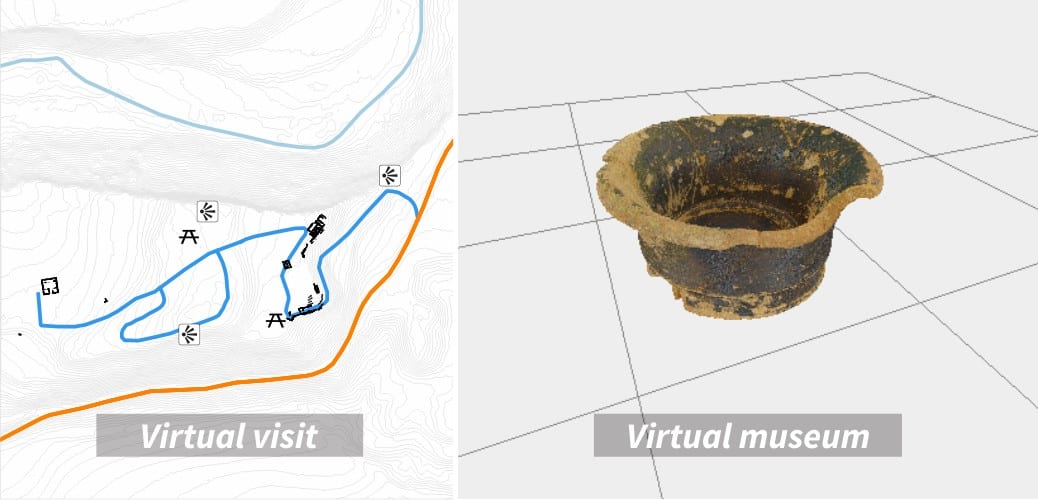About the project

In the digital age, the methods used in the world of archaeology are seeing radical changes. These changes are partly characterised by increasingly systematic digitisation of the information and by non-destructive complementary techniques that allow optimal use of time and resources.
The present project at Puig Ciutat began in 2010. It was approached from the outset with a plan for the archaeological work based on exploration of the site and its surroundings using geophysical methods and different tools for digitally recording the results of the excavations were gradually added.
Puig Ciutat is an interdisciplinary project whose main goal is to provide a test bed for the application of new technologies in archaeology and for interactive, communal dissemination of the information.
The project is based on a combination of different methods of geophysical surveying for extensive excavation in several of the rooms detected using this system. Different tools are gradually added for digitally recording the results of the excavations (photogrammetry, geographical information systems, etc.), which make optimal use of time and resources and facilitate the dissemination of the results obtained.
The project is headed by the GIRA association. The main partners are the professional firm SOT Prospecció Arqueològica, the Museu d’Arqueologia de Catalunya (Museum of Archaeology of Catalonia), the DIDPATRI Research Group at Barcelona University, and the Institut Català d’Arqueologia Clàssica (Catalan Institute of Classical Archaeology).
In the course of time, the project has received support from different local and regional administrations, such as the Consorci del Lluçanès (Lluçanès Consortium), the Ajuntament d’Oristà (Oristà Town Council) and the Consell Comarcal d’Osona(Osona Regional Council), as well as institutional and financial support from the Direcció General de Patrimoni Cultural (Directorate General of Cultural Heritage) of the Generalitat de Catalunya (Catalan Government).
This website on the Puig Ciutat site and its scientific project for disseminating science in society has been possible thanks to patronage by the CEDINSA-Eix Transversal company as part of the collaboration agreement reached between the company and the Conselleria de Cultura (Ministry of Culture) and the Conselleria de Territori i Sostenibilitat (Ministry of Territory and Sustainability) of the Generalitat de Catalunya. It has subsequently been enlarged with funding and support from the European Regional Development Fund’s (ERDF) programme ‘Puig Ciutat, the Roman capital of Lluçanès’, with the collaboration of Oristà Town Council and the archaeological firm of Actium Patrimoni Cultural SL.
